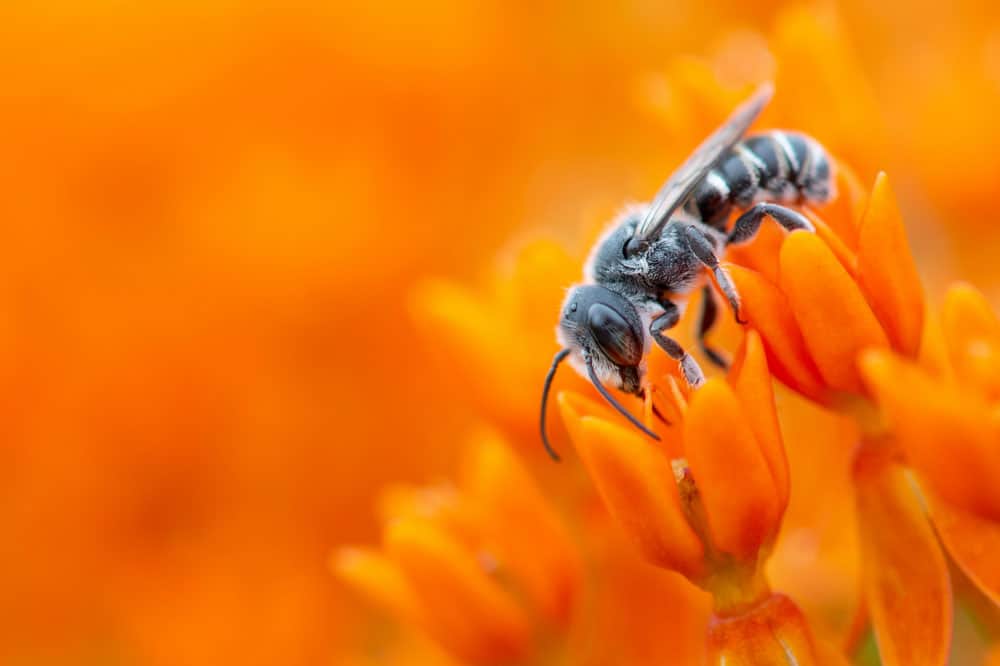Butterfly weed, scientifically known as Asclepias tuberosa, is a vibrant and ecologically significant perennial native to eastern and southwestern North America. Renowned for its bright orange to yellow-orange flowers, this plant is a cornerstone species in native and ecologically beneficial gardens, playing a crucial role in supporting biodiversity, particularly for pollinators and certain specialist invertebrates.

Butterfly Weed Botanical Characteristics
- Growth Habit: Asclepias tuberosa is an upright perennial with oblong leaves. During summer, it showcases large clusters of bright orange flowers that are not only visually striking but also serve as a vital nectar source for a variety of pollinators.
- Height and Spread: It typically grows to a height of 24-36 inches and spreads about 12-24 inches wide.
- Soil and Sun Requirements: Butterfly weed prefers well-drained, neutral to alkaline soils, butterfly weed thrives in full sun conditions. It is drought-tolerant, thanks to its deep taproot system, which also makes it challenging to transplant.
- Flowering Period: The plant blooms from early to mid-summer, offering a long-lasting display of flowers.
Ecological Contributions and Relationships
Monarch Butterflies
Butterfly weed is perhaps best known for its relationship with the monarch butterfly (Danaus plexippus). As a member of the milkweed family, it serves as a crucial larval food plant for monarch caterpillars, providing the necessary nutrients for their development into butterflies. This relationship is vital for the survival of the species, which has seen declines in recent years.
Other Butterfly Weed Pollinators and Invertebrates
Beyond monarchs, butterfly weed attracts a wide array of pollinators, including bees, other butterflies, and hummingbirds, due to its rich nectar. This makes it an essential plant for maintaining pollinator populations and ensuring the pollination of many other plant species. Specialist invertebrates, such as the milkweed aphid (Myzocallis asclepiadis), also have relationships with milkweed plants, including butterfly weed. These aphids feed on the plant’s sap, demonstrating the complex interactions within milkweed communities.
Conservation and Gardening Use
Butterfly Weed is highly valued in conservation gardening and native plant landscaping for its ecological benefits and low maintenance requirements. It is drought-tolerant, deer-resistant, and can thrive in poor soils without the need for soil amendments. Its ability to attract beneficial insects makes it a key component of pollinator gardens, meadow plantings, and ecological restoration projects.
While butterfly weed is a robust and beneficial plant, gardeners should be aware of a few considerations:
- Late Emergence: It emerges late in the spring, so marking its location can prevent accidental disturbance.
- Toxicity: The plant does have toxins that can harm mammals if ingested in quantity. These toxins, however, make the plant and the insects that feed on it less palatable to predators.
- Seed Dispersal: The plant self-seeds freely, which can be managed by deadheading to prevent unwanted spread.
Asclepias tuberosa, or butterfly weed, is more than just a beautiful addition to the garden; it’s a cornerstone species for ecological gardening. Its vibrant flowers not only add aesthetic value but also play a critical role in supporting biodiversity, particularly for pollinators like the monarch butterfly. By adding butterfly weed to your gardens and landscapes, you can contribute to the conservation of these essential species and the overall health of local ecosystems.
